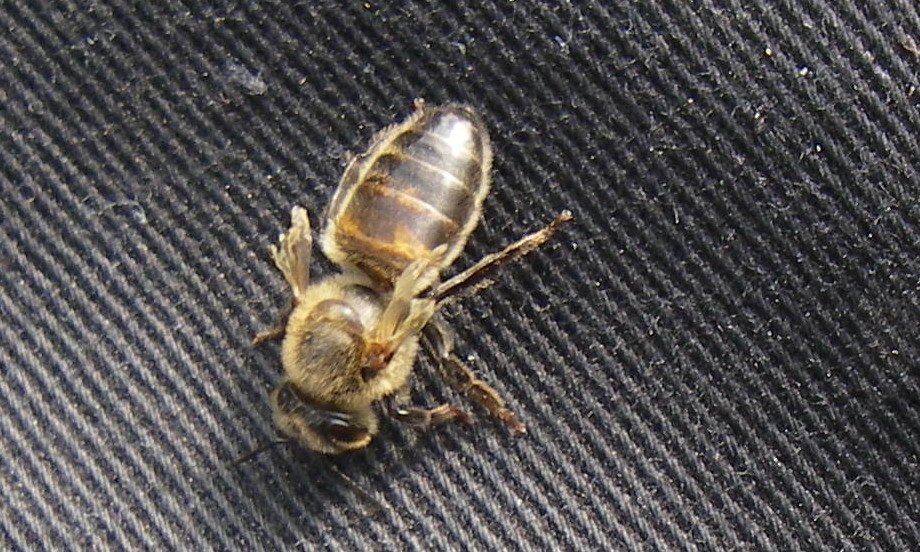B
Beefriendly
Guest
... there are very low levels of varroa in my hives ...
What levels do you consider low?

... there are very low levels of varroa in my hives ...
What levels do you consider low?
I applaud those who can go treatment free. It doesn't work for me but I do monitor regularly and use OAV only. Pargyle has worked very very hard to keep on top of mites. It's a full time job. My point was that buying vsh bees and sitting back doing nothing is not the answer. My two LASI queens have not done any better than the other colonies as far as mite numbers go but they have done considerably worse in production and have come through the winter much weakerRoutine treatments recommended by profiteering salesmen don't sit too well with me. (yeh, yeh, trust issues!)
The annual vet shots for example; they appear to have more and more evidence stacking against them that they are nothing but a billion dollar industry driven cash cow. Ever wonder why humans don't need a vaccine cocktail every year when they are the same live attenuated vaccines that get used across species..
I think with Varroa you should monitor, identify and act accordingly. Blindly treating to a general schedule isn't as hazardous as refusing to treat, but could probably be improved by taking into account local conditions and colony condition.
I started this game in my sandals, eating tofu whilst thinking I could go treatment free; funny how time changes you! Now I settle on the things I can control that have less risk attached to them such as cell size and rotating out contaminated comb.

Ben you need to do something now. There is no collateral damage if your hive is dead.















Ben you need to do something now. There is no collateral damage if your hive is dead.
 I would start treating asap or you will lose them
I would start treating asap or you will lose themLess than three a day mite drop on the boards on average,
With just one colony my preference for not treating is being severely tested. If they are going to die from a high varroa infestation I'm not going to achieve my aim this year of increasing my number of hives.
I'm seeing a daily mite drop averaging 35-40. With occasional counts over 60 on sunny days. Not noticed mites on the comb but have seen on crawlers outside the hive.
And I'm seeing DWV sufferers with different levels of deformity.

Not easy to witness.
The analogy is not with cats or dogs or sheep or gazelles but with the hedgehogs I have in the garden suffering ticks and lungworm. They need help sometimes but they handle it or they die.
OAV too expensive. Considering MAQS but worried about collateral damage.
. . . . Ben
We work to very differing levels of acceptable varroa numbers. If I see 3 a week on the notoriously inaccurate drop board I treat at the next window of opportunity.
Currently running at drop rate of less than one per week. That is the 2 current hives with boards in dropped 1 mite in a week between them.
These are double brood hives with up to 12 frames BIAS at the moment.
but if you are treating with that degree of intensity it's what I would expect.
Yes I occasionally do an alcohol wash, but with the number of colonies not practical to do all of them as it's quicker to treat them.
Not sure what you mean by "that degree of intensity" as you don't know what my treatment levels are; so how could you expect anything?.......
but I'll tell you anyway......my typical regime is possibly 2 vapes during the warmer months IF required (and yes I am aware it only affects the phoretic mites) and a definite 4 in the late autumn regardless of mite levels. Usually nothing in the winter unless for some reason a hive is showing exceptional drops.
I look at it like worming a cat, preventive; but hardly intensive.
Yes I occasionally do an alcohol wash, but with the number of colonies not practical to do all of them as it's quicker to treat them.
Natural drop is not a good indication of infestation.
Most of the varroa is in the brood
I have a hive with loads of very poorly looking drones being dragged out dead or dying.
BUT a varroa drop of only about 1 a day.
Odd.
There are other more persistent ways of getting oxalic acid into the colony. Mixed with glycerine and soaked in cardboard has worked well for a (cough) friend.
Enter your email address to join: